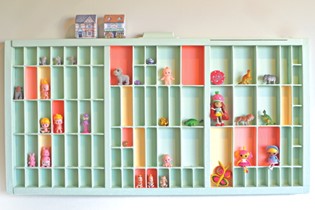The wonder of slumber: settling techniques and sleeping tips for baby

The topic of infant sleep tends to be rather controversial. This is surprising in the sense that sleep is such a natural phenomenon, essential to the life of both parent and child, but not when you consider the fact that parenting philosophies vary so greatly. In my work as a baby sleep consultant I support parents with practical advice that is weighted to neither the left nor the right. I am an advocate for parents everywhere and strongly encourage mums and dads that there is no right or wrong way to parent. We all parent differently. I offer general guidelines, in both my consultancy work and in any articles I write, and I trust parents to apply the information I present in ways that resonate with their own parenting style. There is no one-size-fits-all when it comes to caring for babies and raising children. In my 40+ years of experience in Karitane nursing, baby and childcare I have seen various techniques – with varying levels of effectiveness – for helping babies find their sleep, and the following article serves as a guideline, offering tips and suggestions, to help your family experience peaceful nights of restorative rest.
Before becoming parents people often think they have a fair idea what sleep deprivation is. However, all-nighters to meet a work deadline or partying till the wee small hours have nothing on life with a baby and for many, learning what it is really like to try and function on very little sleep for days on end is quite an eye-opening experience (ironic pun intended). Consequently, when babies arrive the big questions new parents ask me usually focus on getting baby to sleep and then how to instill and maintain good sleeping habits.
Perhaps the first question we should ask is do babies actually have sleep issues? Or are the problems we think babies have really due to our misunderstanding of their needs?
It is important to consider and remember the following:
• Sleep is a nutrient and goes hand in hand with food. If you have a sleeping issue you will probably find a feeding issue. Better sleep usually means better feeding, and vice versa.
• Although some people say that babies will know when they are tired and just go to sleep, falling asleep is actually a learned behaviour and healthy sleep habits need to be taught. Like other aspects of caring for babies and toddlers, such as weaning or toilet training, children adapt new skills at different speeds and what works for one child, might not work for another. In general terms, however, I encourage parents to invest time in teaching their baby how to find their sleep. The rewards are well worth it!
• When I talk about teaching a baby to sleep, I’m referring to the process of showing a baby how to find their sleep. This process not about rigid rules, rather it is about establishing boundaries with some flexibility that both you and your baby can work within in a nurturing way.
Setting off on the right foot
So, a hot topic for many a new parent – what are the dos and don’ts when it comes to newborn sleep?
Firstly, if you could throw away all the myths you’ve heard and actually sit down and get to know your baby you are on the right track. What we need to understand is that babies do wake in the night and they do need feeding. In fact I relate this to Health and Safety - we want our babies to wake overnight, and as they grow they will still continue to wake overnight but in most cases will know how to resettle without support from their parents.
In my experience there is more than one way to encourage good sleeping habits in babies. With babies under 12 weeks old I encourage parents to embrace the “fourth trimester” mind-set. This concept is based on nurture and attachment and promotes bonding with your baby. The idea is to go to your baby and comfort them, rather than leave them in a cot or bassinet to cry themselves to sleep.
When parents come to me for support, the hardest habits to change are the large movements parents have been using to get their baby to sleep – rocking, swaying, buggy or even car rides etc. It’s really beneficial, I think, that right from the newborn stage, if you let your baby sleep on your body then you need to consider your body a still mattress and any movement needs to be small and only on baby’s body (gentle cupping or patting, for example). In turn, when you then start to put your baby into their cot, you can still do this small movement and the only change is that the mattress of the cot replaces your body.
You may be led to believe that if you hold your baby you are in fact spoiling her, or even that she is manipulating you. This is such an old-fashioned notion but it still rears its head and confuses new parents. I believe you cannot spoil a baby; it’s called nurture, and it is the very essence of parenting.
The other factor to consider is the conflicting advice on whether to practise routine based care (which is predominately parent led) or to follow no, or very little routine, (predominately baby led). I believe that if you take inspiration from both groups and parent somewhere down the middle you will have a more balanced and manageable day-to-day life, and fewer sleep and feeding issues. In other words, relax! Having some structure in your day is helpful, as is being flexible. Parent the way that instinctively feels right to you, and you’ll do a great job.
That said, I can offer a few pointers for creating flexible routines that support happy and healthy sleep habits.
Too tired
Babies like consistency (doing the same thing, 80% of the time), so aim to keep their wake times (the amount of time between naps) consistent throughout the day. For example:
• 0 to 6 weeks old – 45 minutes to 1 hour of wake time between daytime naps.
• 6 to 12 weeks old – 1 hour to 1½ hours.
• 12 to 16 weeks old – 1½ hours to 2 hours.
• 16 weeks to 24 weeks old – 2 to 3 hours.
When babies get over-tired it is harder for them to find their sleep and they tend to cry louder and longer. Irregular wake times or having wake times that are short in the mornings and longer in the evenings can contribute to night waking because your baby may be overtired. We need to bear in mind that babies do cry – crying is their form of communication. Crying is a baby using their only words so we need to stop, listen and act.
Finding sleep
Allow your baby the ability and right as an individual to find their sleep. As a comparison, I relate this to how adults go to bed. We will often read a book, pray or meditate, watch TV, or chat with our partner before falling asleep. A baby can only do one thing and that is grizzle or cry. It is healthy and normal for a baby to grizzle or cry a little before falling asleep, with or without the support of a parent. As a parent it can be difficult to listen to but as long as your baby is generally happy and contented, crying is part of life.
However, it is not healthy for babies to be left on their own to cry for a long period of time. I don’t endorse “crying it out” but I do encourage parents to allow their baby the ability to find their own sleep. In my experience, finding sleep can take a baby approximately 20 minutes. You will not make progress by leaving your baby to grizzle, cry or scream for hours. You’ll succeed faster by first giving your baby space and then helping her find her sleep using my settling techniques (described below).
It is also important to understand that this is not about walking away from your baby and being uncomfortable with what you are doing. Any time you leave your baby to grizzle while they find their sleep, both the appropriate level of crying and the appropriate amount of time need to be considered.
Getting settled
It is very important to avoid excessive movement when teaching a baby to self-settle (fall asleep) and re-settle (stay asleep for the ideal period of time). When you hold your baby to settle her, remember your body represents her bed, so unless what you are doing in your arms can also be replicated in her cot, you need to stop. Small, slight movements in your arms while the rest of your body is still can easily be replicated in the cot.
Beware the catnap
Most babies like to catnap. A catnap is basically one sleep cycle, approximately 45 minutes in length, but it can be shorter. The goal is to show your baby how to move from one sleep cycle to the next without fully waking up, thus curbing shorter catnaps and encouraging her to sleep for an ideal length of time (at least an hour and a half, longer is also fine). Babies often stir at the end of a sleep cycle and it is when that stirring results in baby waking fully that catnap habits can form.
Teaching babies to resettle and sleep beyond one cycle is universally challenging, however, as with most things in life, the efforts you put in will reap a great reward. If you can teach a baby to resettle during the day, you will have a better chance of resettling them when they wake at night. Conversely, if you choose not to resettle during broken daytime sleeps then you cannot really expect your baby to resettle overnight – although there are always exceptions to the rule; some babies will, some babies won’t.
My settling techniques (see below) can be used to resettle a baby who should still be sleeping. A baby under 12 weeks old can be resettled in the cot or in your arms. When baby has returned to deep sleep in your arms you may be able to return her to her cot for the rest of her nap, or you may find you need to keep baby in your arms. If that is the case, use the time to rest yourself.
Beyond 12 weeks, go to your baby as soon as she starts to cry, gently turn her onto her side but away from you and use my “engulfing” technique to cocoon her with your arms so she feels secure. Your presence will provide comfort and she won’t need to see you or hear your voice. Use cupping/patting or shushing if needs be and stay there until she returns to a deep sleep.
In my experience it can take up to 12 weeks to teach a newborn baby how to self settle and a good 16 weeks to resettle.
To prop or not to prop?
There is a raft of products available touting solutions for sleep-deprived parents. Sleep props are very appealing as they offer comfort when we’re out of our depth with a crying baby. While many parents praise dummies, white noise and movement, ideally these shouldn’t be introduce too soon as sleep props can in fact hinder a baby finding sleep on their own. Plugging a baby with a dummy as soon as she goes down for a sleep can actually increase her crying time or prolong the process of finding her own sleep. Although you may feel better if you’re walking the hallways or driving your unsettled baby around the block, both of these movements cannot be replicated in the cot, so while you’ll see a positive result in the short term, your baby will no doubt wake up on being transferred back to her cot.
Babies tend to calm more quickly when being held by someone standing up as opposed to sitting down, however holding a baby for a long time – especially as they grow – is hard on our bodies and unsustainable – hence the ultimate goal of baby sleeping in a bed.
If you have allowed your baby an appropriate amount of time to find sleep on their own (for some parents this will be a few seconds, for others it will be a few minutes), but are still unsuccessful, then it’s time to intervene and help. Begin with my settling techniques, which offer some small calming movements. Then, by all means, try a dummy and some white noise. The important distinction now is that these items have become a sleeping tool rather than a prop. When using white noise, I often suggest downloading a decibel app to ensure that the white noise is not louder than recommended for babies.
Feeding to sleep
Feeding to sleep and snack feeding may contribute to your baby not finding her sleep easily. Feeding to sleep is another subject that is widely debated but comes down to personal choice. There are reasons for and against doing this so you may want to do your own research and follow your own instincts here. In my experience, I find a lot of parents are happy to feed to sleep for the first 12 months but want to give up around 18 months. Here’s where you may get stuck, because by then your child is quite happy with the feeding-to-sleep arrangement and won’t be inclined to give it up without a fight. I suggest that as your baby’s wake times stretch to around two hours long, then her wake time routine should be feed, play, feed, swaddle/sleeping bag and then bed. Swaddling or putting on the sleeping bag after milk avoids the feed/sleep association while ensuring she is still going to bed on a full tummy.
Sleeping through the night
If only I had a dollar for every time someone asked me “when will my baby sleep through the night?”. There is no easy answer I’m afraid, as all babies are different. Some babies require feeds at night for much longer than others.
It is important to remember that feeding provides babies with comfort – a comfort they can get very attached to. Once a baby regains her birth weight, and so long as there are no medical issues, I will attempt to resettle during the night before resorting to feeding. This is to ensure that any night feeds are because baby is hungry rather than using a feed just for comfort. You cannot resettle a baby overnight if she is hungry.
It takes TACT
That is, Time, Acceptance, Consistency and Touch (your presence), to support a baby towards healthy sleeping habits. Remember it is normal for babies to wake during the night because they need reassurance with a cuddle or because they are hungry. If your baby is not happy to go back to sleep without a feed, of course you will feed them. If they need your continued presence throughout the night for reassurance, you might consider safe co-sleeping. These needn’t be the contentious sleep issued they get touted as – they are really just matters for informed personal choice. The TACT rule applies to whatever sleep issue you are facing. Babies and children take their signals from us and read our body language, so ideally you need to at least appear calm, patient and relaxed when helping your baby fall and stay asleep. Be kind to yourself – you are doing a great job and the rewards for helping teach your child to get all the sleep they need are well worth your efforts.
The concept of sleep training has both advocates and adversaries. The reality is though, whatever you do to get your baby to sleep is a form of sleep training – or ‘parenting to sleep’ as I prefer to call it. Some mothers feed their babies to sleep for several years – to those mums I say, “You’re amazing!” This requires a long-term commitment and copious amounts of energy, because this habit is not easily changed. Other parents co-sleep safely with their babies and wouldn’t have it any other way. This is great – our babies need to be nurtured and close proximity helps this. For other parents, these two techniques don’t resonate as strongly so they guide their babies to sleep in other ways. This is why, at the end of the day, my advice is always go with your instincts and remember that we all parent differently. Take on board the ideas that resonate with you, and test them to see if your baby responds positively.
And let’s be kind to each other – parents need support, almost as much as they need a good night’s sleep!
Dorothy’s settling techniques
Shushing
Shushing is a long, low sound, resembling air being released from a tyre. It should be loud enough so that your baby can hear it over her cry. It is thought that babies respond to shushing because it is similar to the sound they experienced in the womb.
Patting and cupping
Patting or cupping your baby’s bottom or lower body mimics your baby’s heartbeat and reassures her of your presence.
Patting is a rhythmic, firm and repetitive action done with a flat palm.
Cupping is a stronger action and is done with a cupped palm, incorporating both cupping and a short but gentle thrust forward of baby’s body.
Both patting and cupping can be done in your arms or adapted for the cot.
The engulf hold
As its name suggests, the engulf hold provides as much body contact as possible. This gives your baby the sense of being completely contained, as if in the womb. It positions your baby in such a way that you can initiate other settling techniques simultaneously. In addition, it provides warmth, intimacy and the meditative beat of your heart. Hold your baby so that her head is resting on the upper region of your non-dominant arm. For breastfeeding mothers, this ensures that your baby is not too close to your breast. Draw your baby in close so that you are pressed tummy to tummy with her face nestled just below the top of your shoulder. Your palm will be on her bottom with her legs tucked up into your body and supported by your forearm. With your non-dominant arm, reach around your baby’s shoulder and take hold of her arm to steady it and control the startle movement.
For this technique to be effective, there should be no eye contact or communication between you and your baby. Allow your own body to do the nurturing.

AS FEATURED IN ISSUE 27 OF OHbaby! MAGAZINE. CHECK OUT OTHER ARTICLES IN THIS ISSUE BELOW

















